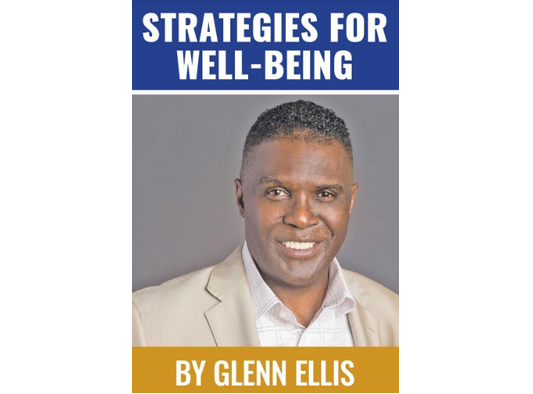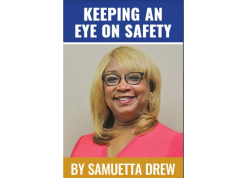By Glenn Ellis
A few months ago, I did a radio program with a researcher whose new study revealed a shocking finding: The killing of unarmed black men by police, not only traumatizes the victim’s family; but it also traumatizes black people who have no connection, other than just hearing about the incident.
I could devote this entire column to the shooting of unarmed black men by police, but there is (in my opinion) an even larger issue: collective trauma of black people, and the resulting mental health.
Now, the study is important because it actually sheds light of a legacy of trauma that is pervasive and ever-present in the history of blacks since being brought to these shores. What is key to understand about the study, is that the same findings did not apply to whites who were observed in the study.
So, the takeaway is that there is something intrinsic in the lives and experiences of blacks that cause traumatic events to resonate in a way that is not found in whites in this country. I’m sure we can all agree that institutional (and overt) racism, coupled with higher rates of poverty found disproportionately in blacks is not open for debate…it’s a fact.
I found myself personalizing this reality during a revealing experience on a brief visit to my hometown, Birmingham, Alabama, on Memorial Day (how ironic!).
You see, I grew up in Birmingham during the turbulent times of the 1960’s, and witnessed, first-hand, the most violent and horrific incidents imaginable.
No, I was not beaten, nor was my house bombed. But I was personally acquainted with folks who were. In addition to my childhood friends, The Four Little Girls being killed in the bombing at Sixteenth Street Baptist Church in 1963, literally, everyday throughout this time period, I heard of, or was told about a violent incident that occurred at the hands of white racist vigilantes. On many days, these vigilantes were the police.
My experiences were shared by all in my black, segregated, community: family, neighbors, friends, and classmates. It was on this recent trip “back home” that I had an epiphany.
I spent the holiday in the company of a small group of five friends, with whom I went back as far as grade school. We all have stayed in touch over the years and have never lost touch with each other. Along with their children and grandchildren, we ate, laughed, reminisced, and reflected. We could have kept it light-hearted, and just had fun. We did have fun – lots of it. But we also allowed ourselves to become vulnerable.
This was a safe space; no pretense; boasting; or belittling about accomplishments, ups or downs throughout our respective lives. We were vulnerable, and free to express our love and appreciation for each other. Free to talk about things that weren’t safe to talk about with people we interact with in our daily lives.
Those of us with busy lives would have been content to spend this time alone and resting in the comfort of home; others could have been out and about dropping by at holiday cookouts around the city.
Yet, intuition told each of us, that we needed to be around each other.
The indescribable atmosphere of safety and unconditional love allowed us to individually and collectively share aspects of the years gone by when we were hurt (sometimes by each other) or scared. For me, it was the first time my friend Stanley told me to my face how disappointed and hurt he was when, at the last minute, I pulled out of going to Morehouse with him and Preston (RIP), after high school years when we were inseparable. I shared how for decades I carried around the feeling of having betrayed their trust and confidence. We both acknowledged how it made the first few years following high school rather “uncomfortable” for the three of us. In spite of an enduring friendship throughout the years, we carried this around deep inside.
This “aha” moment made us realize all of the other pain from our childhood experiences that we each carried inside yet continuing on through life. I understood how, as I look back at our friends and classmates who fell along the way from drugs, self-destructive behavior; depression; and post-traumatic stress disorder (PTSD). I could see how pain and trauma deeply buried inside can destroy us, if it is allowed to linger and fester. Many of them were classmates we looked up to. Some were the life of the party and brought a smile to everyone’s face. Yet, deep inside they were hurting, without a “safe space” to heal.
Looking back at the radio program on collective trauma, it now becomes clear how just knowing about what happens to a person you may not even know, can be harmful to your mental health if you are black.
We all left our Memorial Day gathering feeling restored and rejuvenated. We had developed a newfound respect and appreciation for what we now know is our “safe space”.
As we continue to see rates of mental illness, depression; and even suicide rates rise in black communities all over this country, we must recognize the value of creating “safe spaces” to heal. Identify the people in your life with whom you trust, and can be vulnerable, and allow yourself to open up to them. We all need to release the pain and trauma that’s buried deep inside. For us, it was our “crew” from Smithfield in Birmingham (okay, Debra). You just need to look around and identify your “crew”. Of course, this is not the answer to mental illness and trauma in the black community, but it’s a great start, towards healing, and it felt good.
For far too long, mental illness has been a deep secret for black folks. How’s that working for us thus far? It’s not.
Glenn Ellis, is Research Bioethics Fellow at Harvard Medical School and author of Which Doctor?, and Information is the Best Medicine. Ellis is an active media contributor on Health Equity and Medical Ethics. Listen to Glenn, on radio in Birmingham or V94.9, Sundays at 7:50 p.m., or visit: www.glennellis.com




